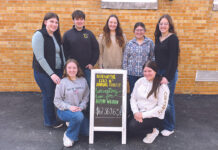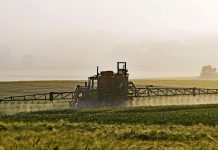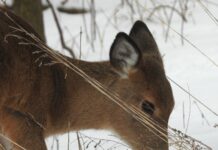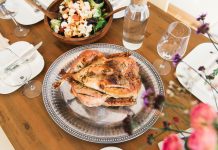Despite the higher price, sunflower kernels are the best value in bird seed.
Feeding backyard birds can be as simple or as complicated as you choose to make it.
Let’s begin with simplicity. The single food that attracts the greatest variety of birds to feeders is sunflower seed in tubes, hopper feeders, or even simply cast upon the ground.
Black-oil seeds
Black-oil sunflower is appealing because its shells are thin and easy to crack, and it has a high oil (energy) content. In fact, black-oil seeds are grown primarily to be crushed for the sunflower oil market. Virtually every seed-eating bird eats black-oil seeds.
Striped sunflower seed is also great, but its heavier shell makes it more difficult to crack, and it’s a bit more expensive. It’s a favorite of cardinals, grosbeaks, and blue jays.
Hulls vs. hulled
Hulled sunflower seeds are more expensive because the hulls have been mechanically removed. But every ounce of kernel is eaten; there’s no mess and no waste.
The hulls of in-shell sunflower seeds make up as much as 45 percent of the weight of the product.
Despite the higher price, sunflower kernels are the best value in bird seed.
Without hulls, kernels are subject to deterioration when wet, so they must be kept dry.
My backyard
I offer kernels in Gold Crest’s All-Weather Feeder and Droll Yankees’ Big Top.
The All-Weather Feeder’s food slots are small, completely protected from rain and snow, and suitable only for sunflower seeds.
The Big Top is a perch-less, bowl style feeder protected from above by a large transparent dome. Because the Big Top has seed ports that can be varied in size, it is suitable for nuts as well as sunflower kernels.
Nyjer seeds
Nyjer®, the tiny black seeds often incorrectly called “thistle,” attract goldfinches, house finches, purple finches, and redpolls. Because nyjer is imported from Africa and southeast Asia, it’s more expensive than sunflower seed, but its high oil content makes it a great winter food.
And farmers can rest easy because nyjer is sterilized at U.S. ports of entry so it does not germinate. Finch tube feeders with small feeding ports are best for nyjer.
If you object to the higher price of nyjer, stick with sunflower kernels.
Aw, nuts!
Nuts of various types are another more expensive bird food, but their appeal to species such as chickadees, titmice, nuthatches, and woodpeckers justifies the expense.
Peanuts, walnuts, pecans, and almonds are the more familiar nuts that are now commonly found in better quality nut mixes.
Most of the nuts that find their way into bird food mixes originate in candy factories where they failed to meet standards for human consumption. This also explains why you will sometimes find a piece of candy in a bag of nutty bird food.
Stainless steel wire mesh tubes require birds to remove nuts individually so they disappear slowly from this type of feeder.
Millets
Millets, especially white millet, attract a variety of ground-feeding sparrows, game birds, and waterfowl.
One of millet’s best qualities is that its seed coat is hard enough to resist weathering, but not too hard for birds to crack.
Whole corn
Crows, jays, and game birds love whole corn kernels. Unfortunately, it’s also a favorite of pigeons, grackles, and squirrels.
Cracked corn is less desirable because it’s dusty, it spoils quickly when wet, and it attracts some undesirable birds. Pigeons, starlings, and house sparrows quickly find feeders filled with cracked corn, so use it sparingly if these birds are a problem.
Common fillers
Milo is often used as a filler seed in cheaper seed mixes. The seed shell is too hard for most birds to crack. Wheat and oats are also common filler ingredients in cheap mixes.
Read seed mix labels and avoid blends that contain these seeds or the generic term “cereal grains.”
Why we do it
There’s only one reason to feed wild birds — to enjoy them. Birds are mobile and can easily find food sources over a large area. Feeders just make their lives easier. They can spend more time actually eating instead of searching for food.
Place feeders where they can be conveniently seen from a favorite chair, the dining room table, or the kitchen sink. And match your favorite birds to their favorite foods and feeders to insure an enjoyable winter feeding season.












